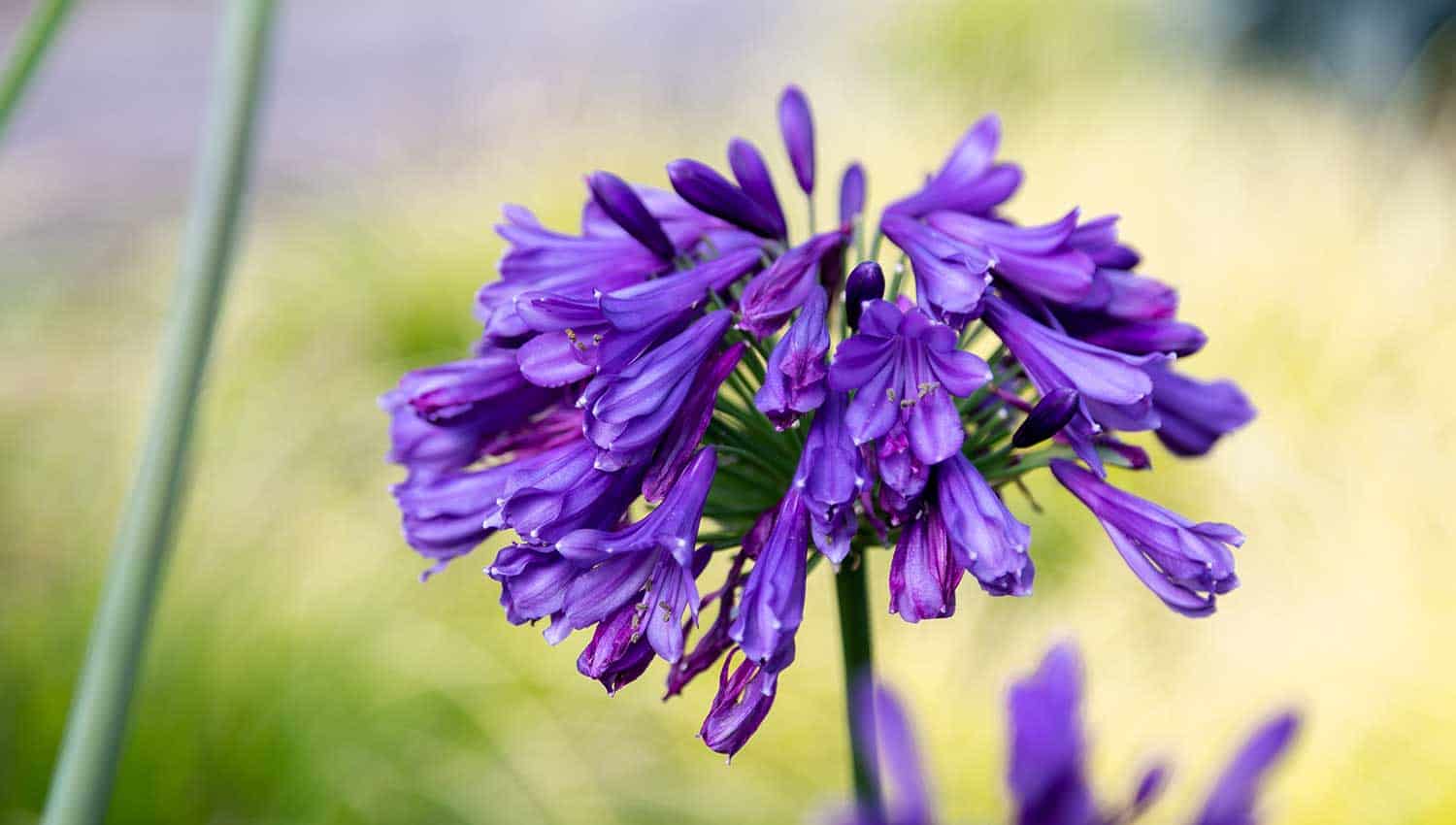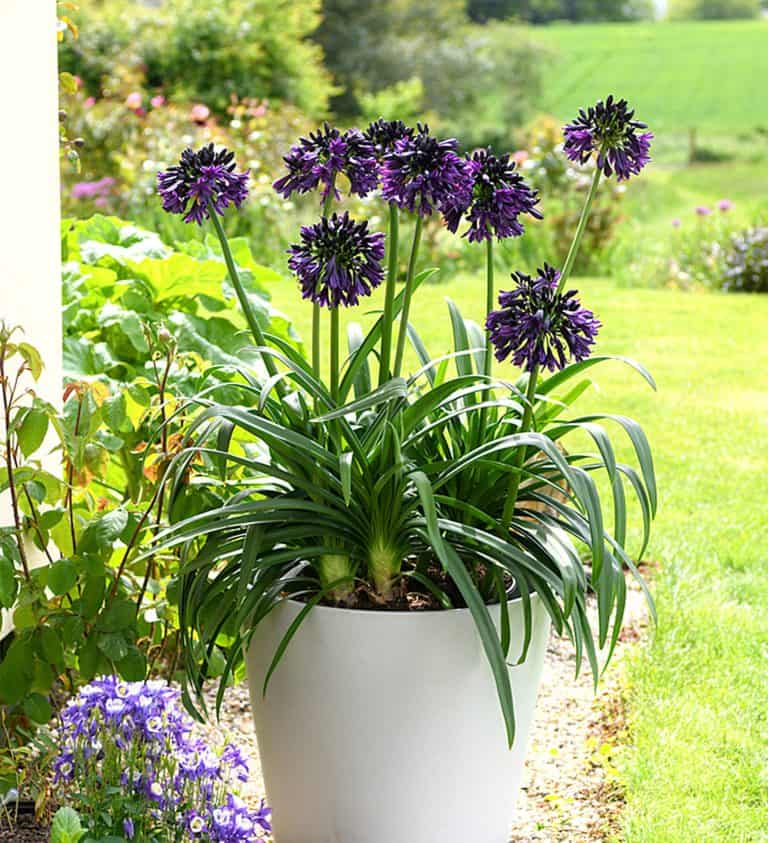Agapanthus Growing Conditions: Soil, Sunshine, and Watering
Agapanthus Growing Conditions: Soil, Sunshine, and Watering
Blog Article
Unleashing the Secret to Successful Agapanthus Growing: Idea for a Flourishing Yard
In the realm of horticulture, cultivating agapanthus efficiently needs a tactical method that includes various elements of plant treatment. With careful attention to information, one can open the secrets to nurturing these magnificent blooms, bring about a garden that flourishes with appeal and vibrancy. By understanding the nuances of agapanthus cultivation, one can produce a setting where these plants flourish and bloom generously. In the complying with conversation, we will certainly discover necessary pointers and methods that will assist you in the direction of a prospering agapanthus yard, supplying understandings right into ideal methods, soil conditions, watering strategies, and a lot more.
Planting Agapanthus: Best Practices
When growing Agapanthus, correct soil prep work is essential for ensuring successful growth and development of these attractive flowers. Agapanthus, frequently referred to as Lily of the Nile or African lily, thrives in well-draining dirt with a somewhat acidic to neutral pH level - Agapanthus. Before growing, it is critical to amend heavy clay soils with raw material such as compost or peat moss to enhance drain and give necessary nutrients for the plants
To grow Agapanthus, choose a place that obtains complete sunshine to partial shade, as this will advertise healthy growth and plentiful flowering. Dig an opening twice the diameter of the plant's origin ball and put the Agapanthus at the very same deepness it was previously expanding. Carefully backfill the opening with soil, weighing down securely to get rid of any kind of air pockets around the origins.
Water the freshly planted Agapanthus completely and remain to maintain the soil equally damp, particularly during the plant's active growing season. Agapanthus. Using a balanced plant food once a month can further sustain the plant's development and flowering. By complying with these best techniques for growing Agapanthus, you can develop a sensational screen of these captivating blossoms in your yard
Perfect Soil Conditions for Agapanthus
For optimal growth and growing success of Agapanthus plants, guaranteeing the dirt conditions are suitable is crucial. Agapanthus grows in well-draining soil with a slightly acidic to neutral pH level varying from 6.0 to 7.0. This kind of soil enables for adequate water drainage, avoiding waterlogging which can cause root rot. To boost soil drain, think about adding natural matter such as compost or peat moss when preparing the planting site. Moreover, Agapanthus favors dirt that is rich in nutrients, so including a well balanced plant food during the expanding period can advertise healthy development and dynamic blossoms.

Watering and Fertilizing Tips
To make certain healthy and balanced development and lively blossoms, correct watering and feeding methods are necessary for successful Agapanthus cultivation. Agapanthus plants profit from regular watering, especially throughout the growing period.
When it concerns fertilizing Agapanthus, a well balanced plant food with equivalent components nitrogen, phosphorus, and potassium can be used in the springtime to promote healthy and balanced development and flowering. Slow-release fertilizers are perfect for providing nutrients gradually over an extended duration. Prevent over-fertilizing, as this can lead to too much vegetation growth at the expense of blossoms.
Additionally, incorporating raw material like garden compost into the soil can boost nutrient levels and boost soil structure, assisting in the total wellness of the Agapanthus plants. By complying with these watering and fertilizing pointers, gardeners can ensure their Agapanthus plants grow and create stunning screens of blossoms.
Pruning and Deadheading Strategies
Appropriate trimming and deadheading techniques play a vital role look here in preserving the health and wellness and visual appeals of Agapanthus plants, enhancing the vital practices of watering you can find out more and feeding for effective growing. Trimming Agapanthus involves eliminating invested flower heads, yellowing or dead fallen leaves, and overall shaping of the plant to advertise much better development. Deadheading, the process of eliminating discolored blossoms, not only improves the plant's look but likewise urges further flowering.
When deadheading Agapanthus, it is suggested to snip off the blossom stem at the base using sharp, clean shears. This procedure redirects the plant's power from seed manufacturing back right into root and vegetation growth, advertising a much healthier and much more robust plant. Routine deadheading can prolong the growing period of Agapanthus and stop self-seeding, which can bring about overcrowding.
In terms of pruning, Agapanthus typically gain from a light trim after flowering to clean up the plant and encourage fresh growth. Reducing the invested flower stems and removing any dead or broken vegetation helps maintain the plant's vigor and general look. However, it is important to avoid cutting right into the crown of the plant, as this can damage its wellness.

Protecting Agapanthus From Pests and Diseases
Implementing efficient pest and illness administration strategies is critical to protecting the health and vitality of Agapanthus plants in farming. One typical insect that impacts Agapanthus is the Agapanthus borer, a caterpillar that tunnels right into the plant, triggering damage to the blossoms and fallen leaves.
Along with insects, Agapanthus are susceptible to conditions such as root rot and fungal leaf areas. These issues can often be prevented by making certain proper drain and staying clear of overwatering. Impacted parts of the plant need to be without delay removed to avoid additional spread if indicators of condition show up. Fungicides might also be used as a treatment action, adhering to the manufacturer's guidelines carefully. By remaining cautious and addressing insect and illness problems without delay, gardeners can aid their Agapanthus flourish and thrive.

Verdict
Finally, effective cultivation of agapanthus calls for proper growing techniques, suitable soil conditions, ample watering and fertilizing, routine trimming and deadheading, and protection from conditions and bugs. By following these ideas and tricks, garden enthusiasts can make sure a growing yard full of stunning agapanthus blooms. Agapanthus. Keep in mind to preserve consistent treatment and attention to detail to promote the wellness and long life of these spectacular plants
When growing Agapanthus, proper dirt preparation is crucial for ensuring successful development and development of these gorgeous blossoms.Water the freshly grown Agapanthus extensively and continue to keep the soil evenly wet, particularly during the plant's active expanding season.For optimal development and flowering success of Agapanthus plants, guaranteeing Full Report the dirt problems are optimal is essential. When transplanting or growing Agapanthus, make sure the soil is well-prepared to provide the essential foundation for the plants to develop themselves effectively. One common parasite that impacts Agapanthus is the Agapanthus borer, a caterpillar that passages right into the plant, creating damages to the flowers and leaves.
Report this page